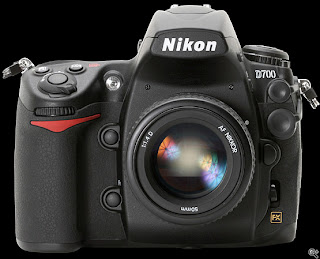As a newbie in photography, and after i bought a camera for the first time, i really don’t know every functions on my camera. Then i read the manual books, browsed the internet and asked my friends about all those things. Now, i want to share this tips for other peoples who have interest in photography and wants to know about such a things in photography.
What is aperture?
Aperture as also called f-stops, are the areas of lens in which light enters the camera. It is controlled by the diaphragm. Aperture controls the amount of light reaching the film. They are marked, 1.4, 2, 2.8, 4, 5.6, 8, 11, 16, 22 and 32. This number depends on your lenses, not all lenses have all these numbers. Some may start at f-5.6 and end with f-22. Some even have more and they work in stops. From f-1.4 to f-2 is one stop, f-1.4 to f-2.8 is two stops.
Remember, the smaller the number is the larger the aperture and vice-versa. For instance, f-4 is larger than f-8, and f-8 is larger than f- 16. Larger apertures allow more lights to reach the film. Each f-stop allows twice as much light as the previous and half as much as the next one. f-4 allows twice as much light to reach the film than f-5.6 but half as much as f-2.8. Think of apertures as a window blind. You get more light with the blind open. As you close the blind, less light enters the room. Lens diaphragm works like a blind. When opened, maximum light goes through the lens and exposes the film. With smaller apertures, less light goes through.
Check aperture simulation on photonhead.com. Really a good simulation. Thanks.
Another function of aperture?
Apertures also control depth-of-field. Depth-of-field is the range of sharpness behind and in front of the point on which the lens is focused. When you focus on an object, only the part your lens is focusing on will be sharp. By closing the aperture, you can bring other objects in sharp focus. If you want a blurred background, use larger apertures. Use smaller apertures to gain more depth-of-field if you want objects in front and behind your main subject to be in sharp focus.
What is shutter speed?
Shutter speeds control the length of time you keep the shutter open to allow light to expose the film. Some shutter speeds are: 1,1/2, 1/4, 1/8, 1/15, 1/30, 1/60, 1/125, 1/250, 1/500, 1/1000 sec. Most cameras offer longer and shorter shutter speeds going as long as 30 sec. to 1/8000 sec. Shutter speeds also work in stops. From 1 sec to 1/2 sec is one stop; From 1 sec to 1/4 sec is two stops. Each shutter speed allows twice as much light as the previous and half as much as the next one. Slower shutter speeds allow more time for the light to expose the film.
Another function of shutter speed?
Shutter speeds control motion. To freeze a subject you need faster shutter speeds. To create blur use slower speeds. 1/500 sec shutter speed can freeze a race car. 1/2 sec speed will blur a waterfall to give a sense of motion.
Try shutter speed simulation on photonhead.com
What should i use for, a shutter speeds or apertures?
This is called priority on camera, for example in my Canon its called “Av” (Aperture Priority) and “Tv” (Shutter Speed Priority). If you want to control depth-of-field, select your aperture priority and your camera will pick the shutter speed. If you want to control motion, select a shutter speed priority and camera will pick the f-stop. Only you can decide which aperture or shutter speed will give the result you want.
Or, you can use both of them by control Aperture and Shutter Speed in “M” (Manual Mode). Remember, apertures and shutter speeds work together. If you change one, you must change the other to get the same overall exposure, otherwise you can over or under expose your shots.
What mode do I have to use to select my apertures and shutter speeds?
Program mode “P” will automatically selects both aperture and shutter speeds for you. It is best for beginners and snap shooters. When you learn more about photography, you should use aperture priority, shutter priority, or manual mode. In aperture priority, you select apertures and camera automatically picks the shutter speed. It is best used when you want to control depth-of-field. Shutter priority works the opposite. You select a shutter speed and camera picks the aperture. It is best used for action photography. When you want to be in total control of your photography, switch to manual mode. You select both the aperture and shutter speeds.
Does my camera always select the right aperture or shutter speed?
No. Camera meters are designed to give medium tone results. Medium tone is neither light nor dark. It is neither white nor black. Medium tone usually a 18% grey for almost digital camera today. Medium tone is half way in-between. Background of this page is medium tone. Tree trunks, blue jeans, green grass, blue sky are all medium tone. If your subject is medium tone, you can trust your meter, otherwise you must compensate by opening up or closing down.
What is exposure compensation?
In program, aperture priority, and shutter priority modes you must use exposure compensation dial which is marked by +/- signs, to open up or close down. If you don’t use exposure compensation dial and change one setting, your camera selects other setting which will give the same overall exposure. In manual mode you can simply change either the aperture or the shutter speed to vary exposure.
Exposure compensation is a dial or on some cameras a button which is used to override the camera meter in auto exposure modes. It should be left on zero setting for normal exposures. When you want to add or reduce exposure, select +/- 1/3, 1/2, or 1 stops of exposure compensation depending on your subject and how much you want to lighten or darken it. Make sure to zero the settings after you take your picture or you will over or under expose other shots. Learn more about exposure.
How should i do exposure compensation?
It depends on your subject and lighting. For white subjects open up 11/2 to 2 stops in the sun or 1/2 to 1 stop in the shade. For black subjects do the opposite. For subjects that are not white or black but are lighter or darker than middle tone, open up or close down 1/2 to 1 stop. How much you open up or close down depends on how light or dark you want your subject to be.
What is ISO?
It is film speed. Films have different speeds and also work in stops. ISO 50, 100, 200, etc. From ISO 50 to 100 is one stop, or two stops to 200. Slower films have less grain and are sharper than faster films, but require longer exposure time. Use ISO 50 or 100 with slide films, and 100 or 200 with print films for general purpose photography. Use faster films for fast action photography.
Photohead simulation will explain you more about ISO.
What camera should i buy?
Avoid program mode only cameras. Buy a camera that has at least aperture priority and manual mode. Avoid a camera that does not allow manual selection of ISO. Consider a camera with exposure compensation, remote release, full viewfinder information, and at least 1-1/1000 sec shutter speeds.
What about lenses?
Start with a kit lens 18-55mm or 17-85mm, 28-80mm and 70-210mm or 100-300mm zoom lenses. You’ll know if you need more lenses based on the type of photography you do. Only you can decide which lenses will work for you. It is best to start with minimum of equipment and add as you grow.
Blurry images. Why?
The blurring effect of camera shake is caused when the lens is moved while the shutter is open. Often seen when holding a camera in low light and high zoom situations. Remember that most cameras have slow lenses, and the potential for camera shake increases as you zoom in. Check this camera shaking simulation
The solution is to use a safe shutter speed or flash to freeze motion. Changing to a wide angle lens also helps, and remember a fast speed film can also buy you a few stops of light.
Another blurry image could come by using a slow shutter speed. Hand holding the camera can cause blurred images. Your lens may be dirty. Low quality UV or Skylight filter is used. Use a tripod for best results.
by
Rick Gondrong
 Key features / improvements
Key features / improvements 
 RSS Feed (xml)
RSS Feed (xml)






























